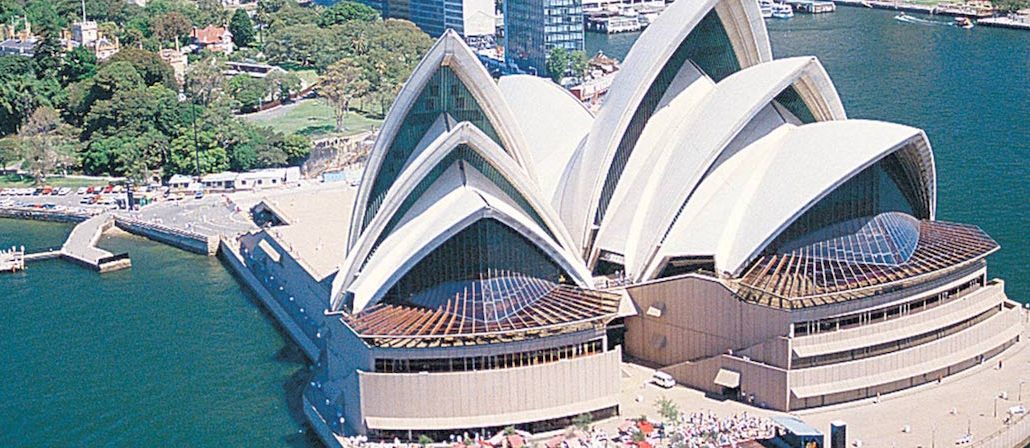Register by Jan 13 to save on passes and connect with marketers from Uber, Bose and more
‘Aussies treat everything like a sport’: A look inside Australian creativity

This is Global Creative, a series by Digiday that highlights the nuances of advertising scenes in different parts of the world through the eyes of a local creative.
Resting on its own between the Atlantic Ocean and the Pacific Ocean, Australia is a driving force of the global advertising market with big agencies setting up offices across Melbourne, Sydney and Perth. Australia has developed a reputation as a hotbed of ad creativity.
“There is rivalry at almost every level: state versus state, city versus city,” said Russ Tucker, digital creative director for Whybin TBWA. “Australian creative culture tends to be about upping the ante whenever possible.”
For example, while Y&R New Zealand’s “McWhopper” campaign for Burger King won Grand Prix awards in media as well as print and publishing categories at Cannes Lions in June of this year, Clemenger BBDO Melbourne quickly responded with a life-size sculpture called “Graham” as part of a new road-safety campaign for the Transport Accident Commission.
This competitive business spirit, Tucker thinks, is also the reason why many Aussie expats have become influential in the global advertising scene, from David Droga, founder and creative chairman of Droga5, to Nick Law, vice chairman and global chief creative for R/GA, to TBWA Worldwide’s CEO Troy Ruhanen to JWT’s CCO Matt Eastwood.
A drive to win aside, the Australian advertising landscape has some other unique characteristics, as shown below.
A down-to-earth sense of humor is common
“To the rest of the world, our work can at times seem brash or politically incorrect, for better or worse,” said Ant Keogh, CCO for Clemenger BBDO Melbourne. “When it works, there’s a refreshing honesty and down-to-earth sense of humor. When it goes wrong, however, it’s a bit culturally embarrassing.”
For example, McCann Melbourne created a video for mobile game Dumb Ways to Die (players need to tilt or tap their device to survive a sequence of absurd, dangerous mini-games) to inform viewers of some death-defying situations. (You may die if you eat a two-day-old pie, for example.)
https://www.youtube.com/watch?v=IJNR2EpS0jw%20
“Australian-ness” works well
Australians are popular in most places, known for their boisterousness and good cheer. Campaigns that reflect what it means to be Australian and a sense of pride in that usually work well. “A real implicit sense of ‘Australian-ness’ seems to win over audiences, especially when it reflects our diversity,” said Anthony Gregorio, group CEO for Havas Worldwide Australia.
The most famous example, Gregorio pointed out, is the campaign “Operation Boomerang” by non-profit We Love Our Lamb that promotes lamb on Australia Day. In the video, an army is sent to save as many Australian expats as possible from a lamb-less Australia Day.
Social is becoming mainstream
There’s an ongoing transition from TV to social media in Australia. If a marketer shifts all of their TV budget to social — both in media and production — they will see exponentially better results, because the quality of social content is regulated by users and social offers a wealth of tools to “reach the right people at the right time,” said Carmela Soares, creative director for Isobar Australia.
“The idea of just throwing a blanket 30-second TV spot in hoping that people will watch or even remember is not great,” she noted. “Sure, some niche audiences still watch more TV than use social networks, but this number is plummeting.”
Havas’ Gregorio thinks that if a brand knows its audience, the power of social to genuinely engage with them is “massive.” For example, Sydney Opera House recently introduced a social media-led campaign “#comeonin,” inviting locals and tourists to explore what is inside the landmark and share their experiences with the hashtag on social.
“Australian agencies like to take a 360-degree solution to give a campaign the best chance,” he said. “In that sense, more and more agencies are adding social elements to their TV spots or video ads, just like this campaign.”
More in Marketing

Inside the brand and agency scramble for first-party data in the AI era
Brands are moving faster to own first-party data as AI and privacy changes alter the digital advertising landscape.

Walmart Connect takes a play out of the Amazon playbook to make agentic AI the next battleground in retail media
The next retail media war is between Walmart Connect’s Sparky and Amazon’s Rufus, driven by agentic AI and first-party data.

What does media spend look like for 2026? It could be worse — and it might be
Forecasts for 2026 media spend range from 6.6% on the lower end to over 10% but the primary beneficiaries will be commerce, social and search.





